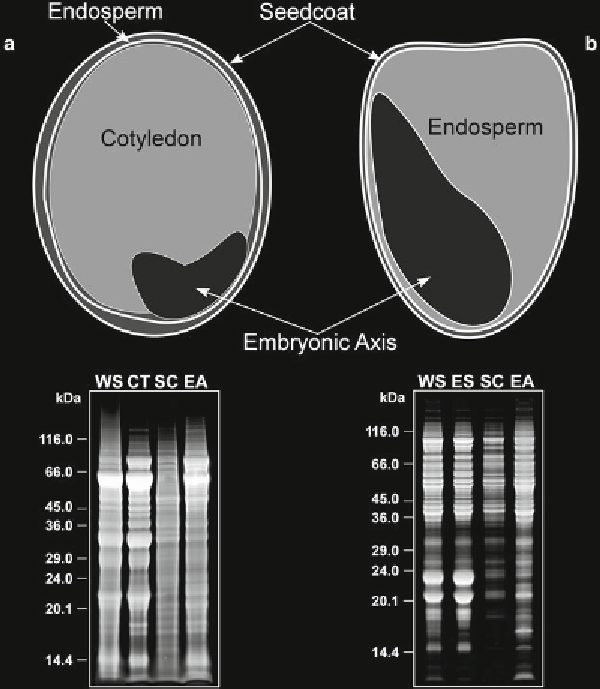Biology Reference
In-Depth Information
Fig. 1
Seed anatomy: The whole, the sum, or just some of the parts? (
a
) Is a diagrammatic presentation of a
S4 developing soybean (
G. max
(L.) Merr.) seed; a representative cotyledon-dominant seed. Below is a
Coomassie-stained 1D SDS-gel of a total protein fraction isolated from whole seeds (WS), cotyledons (CT),
seed coats (SC), and embryonic axes (EA). The soybean seed endosperm is only one to three cells thick and is
not shown in these analyses. (
b
) Is a diagrammatic presentation of a developing maize (
Z. mays
L.) seed
There are of course exceptions. Castor (
R. communis
L.) is a large
endosperm-dominant seed that stores proteins plus oil [
21
,
22
].
2.2 Physiological
Uniformity
Seeds develop [
3
,
4
], reach maturity, and then when the conditions
are appropriate germinate [
19
,
23
]. The fi rst 7-10 days after pol-
lination are termed embryogenesis, and are dominated by cell divi-
sion and organ formation. Post-embryogenesis is an extended
period of cellular specialization which includes the synthesis and
accumulation of reserve polymers. The fi nal aspect of seed devel-
opment is that of maturation/dehydration.
The rate of seed development is variable and is controlled by
multiple environmental factors. It is common to see reference to

